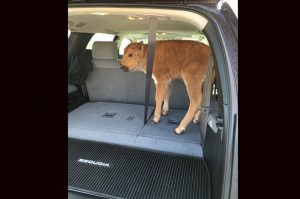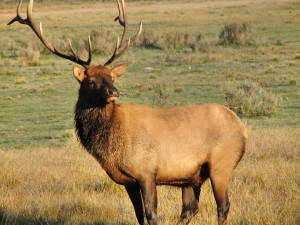Earlier this year, a Canadian wildlife advocacy group made headlines, calling for an end to Ontario’s calf moose hunt. Citing declining populations, the group believes that removing future breeders – calves in this case – will prove to be catastrophic for the province’s moose populations.
While in theory, the sentiment makes sense. If a population is in such dire straits, removing a portion of the hunt, or the entire hunt would surely benefit Ontario’s moose and would be a decision that most of the hunting community would surely get behind.
The problem with rash and emotionally public statements like this is the science behind them. Or in this case, the lack thereof.
Moose populations have shrunk by roughly 20 percent across Ontario, higher in certain regions, and to answer this alarming statistic, the province has enacted several changes to hunting seasons. Two years ago, the Ontario Ministry of Natural Resources dramatically reduced the calf harvest by 50 percent, allowing hunters just a two-week window to take calves, rather than the previous window of eight weeks.
Additionally, the province made changes to the start of hunting seasons, moving them to a later date with hopes of missing the beginning phases of the rut – a period when moose are most susceptible.
These changes, while necessary, unfortunately, have not been given enough time to run their course according to Mark Ryckman, a wildlife biologist with the Ontario Federation of Anglers and Hunters.
“Calf harvest has been reduced by about 50 percent between 2014 and 2015, so we have to give that an opportunity to do something,” Ryckman told us. “We need to continue to monitor and assess it to see if it actually will generate the benefit to moose populations that the ministry expects it to.”
The problem, according to Ryckman and many other advocates for hunting and sound wildlife management practices lies in the lack of available data. The ministry has certainly been able to express that the moose populations in Ontario have been declining, but there is very little data explaining why.
“There is no easy answer to what is causing Ontario’s moose populations to decline,” Ryckman said. “That’s why we were are calling on the Ontario government to reinvest in moose research and monitoring to answer these questions.”
In addition to hunting pressure, factors such as winter ticks, brain worm infections, and predation by wolves and bears have not really been addressed. Each year the province’s Ministry of Natural Resources perform their annual aerial moose inventory flights to get a handle on the overall population of moose in strategic areas across Ontario but due to weather conditions and poor timing, these surveys were canceled this year after a few failed attempts. Factors such as rising temperatures and lack of fresh snowfall in certain areas made it a challenge for officials to locate and identify moose, leading to the potential of skewed year-over-year data.
“There is a suite of conditions that need to be almost ideal in order to fly these surveys, and they lost it up in the northwest this year, unfortunately,” Ryckman explained. “It’s an understandable decision, you certainly don’t want to waste all that money without being able to compare the results from previous years.”
In addition to hunter harvest reports, aerial surveys are the primary vehicle the province uses to assess moose populations in Ontario. While this is a common method of moose inventory assessment across much of North America, the problem lies in the lack of data regarding the mortality of these animals, aside from harvest records.
“They don’t know what the bear populations are, they don’t know what the wolf populations are and they certainly don’t know how many moose are killed by wolves and bears. They generally don’t know how many moose are harvested by indigenous hunters,” Ryckman said. “There are a lot of unknowns out there so we believe we have to double down on the investment and focus on moose before we are in a situation in which it might take decades to recover Ontario’s moose population.”
The unfortunate reality is manipulating hunters and hunting is by far the easiest thing to do but that does not necessarily mean that reducing hunting pressure is going to solve the problem. In the case of Ontario’s moose, the true causes for decline need to be determined first. Whether that cause is ticks, habitat destruction, predation, hunting pressure or a mixture of all the above remains to be seen.
As yet another animal rights advocacy group takes shots at hunting, we as hunters must remain vigilant in advocating for sound wildlife management practices based on scientific research and data. It is in the end, these types of informed decisions that have made the North American Wildlife Model the most successful wildlife conservation program on the planet.
Ultimately both sides of the spectrum have common goals; we both want to enjoy healthy moose populations for years to come. Without a bit of bipartisan cooperation, however, we may end up seeing both our hunting heritage and wildlife populations erode right in front of our eyes.




